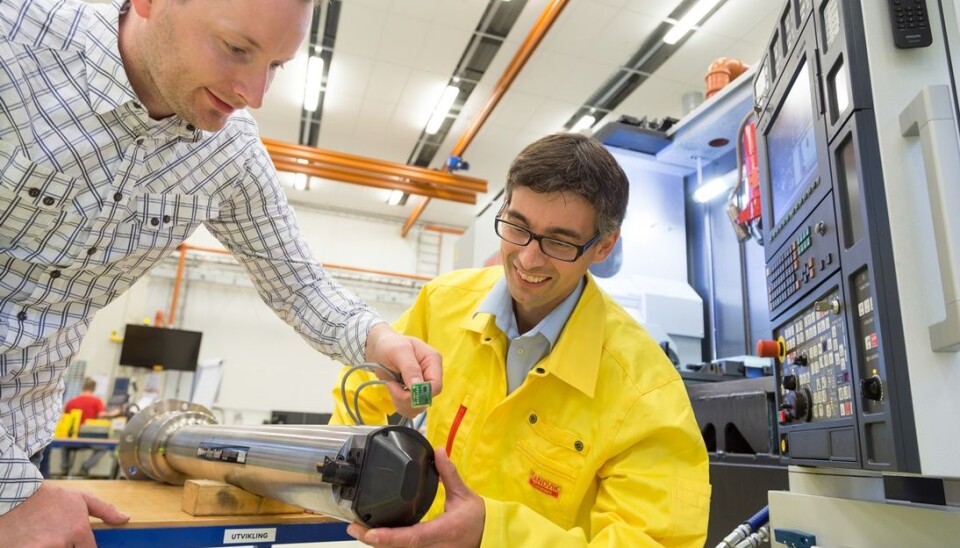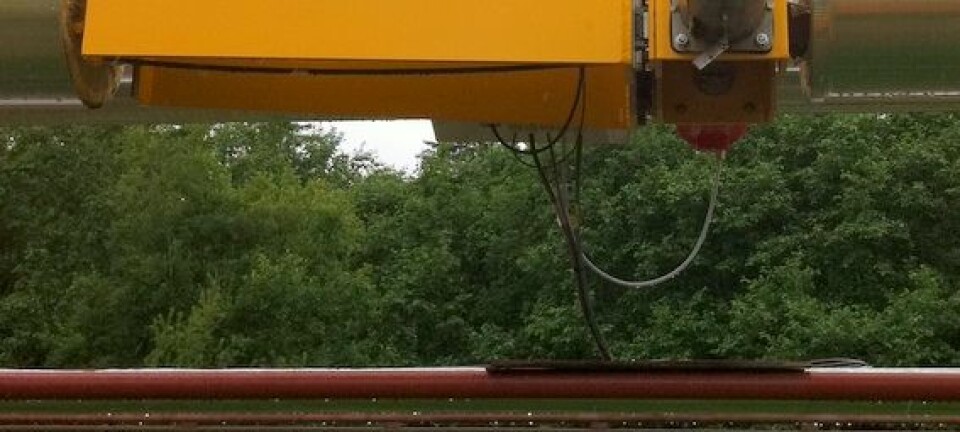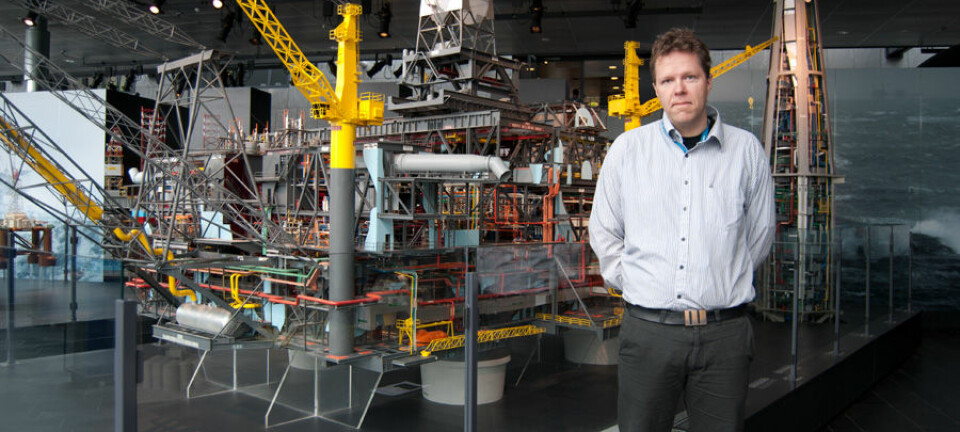An article from Norwegian SciTech News at SINTEF

Tools that see all
They are the world leader in long, slim tools for manufacturing advanced aircraft components and offshore oil valves. Now the company is to fit sensors to its tools to prevent valuable materials being wasted.
Denne artikkelen er over ti år gammel og kan inneholde utdatert informasjon.
Sandvik Teeness AS in Trondheim has 120 employees and is relatively unknown in Norway. Globally, on the other hand, the company is causing a stir with its Silent Tools.
At the major EMO Hannover Exhibition in 2011, the company’s new “damped boring bar” attracted a great deal of attention. The slim tool is about 1.2 metres long, has an additional machining axis at the tip and is designed to machine internal cavities deep in components for the aerospace and petroleum industries.
The length of such a tool means that it can easily bend and vibrate because of imperfections in the material, but the company uses a special damping technology to facilitate productive machining and achieve high-quality results.
Now Sandvik Teeness is making new advances. In its “Smart Tool” project, Smart Tool will add sensor technology to the tools.
“We want to ensure that continuous feedback is provided throughout the machining process. This enables us to avoid throwing away blanks with minor flaws in material or machining,” says Terje Mugaas of SINTEF. “This is important because creating the blanks involves a lot of work and often expensive materials.”
Precision tools
The boring bars manufactured by the company are fitted into large multitask machining units which produce complex metal components. Such a unit may hold a blank which will become, for example, part of the landing gear for an Airbus 380, an oil valve from a “Christmas tree” or a part used in the mechanical industry.
Sandvik Teeness collaborates with the Japanese company Mori Seiki Co., one of the world’s largest suppliers of such machines.
“Inside the multitask machine there is a wide range of tools, including ours,” Tormod Jensen of Sandvik Teeness explains. “While the material rotates, our tool is fed into a pre-drilled hole in the component and machines it to larger and deeper dimensions.”
This is machining at a high level of precision; not only is the hole far inside an enclosed component, but it is also shaped internally with a form of geometric pattern.
Sensors enter the tool industry
SINTEF researchers are now producing a compact and robust sensor package to be fitted to the tip of the Norwegian tool. When the tool is machining material, the sensors will be capable of measuring temperature, vibration, position and flexing during boring.
Sensor technology has developed rapidly in recent years and is now in use in everything from cars to smartphones. While the price and size have gone down, the accuracy has improved. However, so far the technology has not reached the tool industry, and Sandvik Teeness will therefore be the first company to use sensors in this type of tool.
The objectives are two-fold: Feedback will be obtained to prevent faults arising, and information will be provided about the course of machining processes which can be documented in a quality assurance system.
Avoiding wasted material
Developing a new sensor package for this type of tool is a challenge because it must operate in a hostile environment, with cooling fluids, wide temperature variations and sometimes severe vibration. It must also be made extremely compact in order to fit the tool.
Sensors will provide the machine operator with information about what is happening throughout the process.
“When imperfections are discovered in a component today, the process is stopped and the component is normally discarded. However, with the new information the operator can interrupt the process at an early stage and correct the data to obtain the right result. If a faulty setting in the machine software causes a conflict with the tool, the sensors will be able to transmit a signal to interrupt the process immediately. In time, it will be possible to feed all this information directly into the control system of the machining unit, which will result in major cost savings,” says Terje Mugaas.
Quality documentation of the process
The aerospace industry operates with extremely strict documentation requirements for the machining and manufacture of aircraft components. It is vital to produce information enabling traceability right down to an individual machining operation.
With the help of sensors and data logging, it will now be possible to supply considerably improved information automatically.
Project schedule
The new tool will be tested in connection at the Advanced Manufacturing Research Centre (AMRC) with Boeing, at the University of Sheffield in the UK.
This is a research foundation which closely resembles SINTEF and has specialised in collaboration with machine suppliers like Mori Seiki and manufacturers such as Boeing and Rolls-Royce.
“This will ensure that our tool is tested in the correct processes and in materials used in this industry. It will also ensure that the tool has the required characteristics,” says Tormod Jensen of Sandvik Teeness.


































